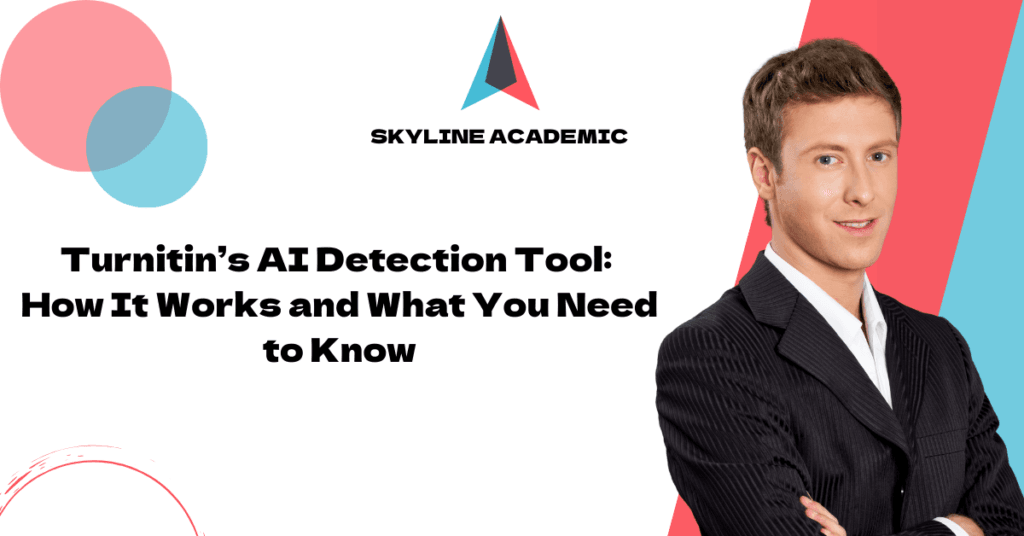The Rise of AI in Academia
AI tools have been invented at an unbelievable pace, and they are an essential tool for students and professionals alike who are eager to boost their productivity levels and foster their innate creative skills. Among the most prominent tools in this regard are ChatGPT, Grammarly, and Jasper AI, all of which provide excellent support in writing, proofreading, and brainstorming to come up with new, innovative ideas. However, this ease and convenience of technological tools raise different kinds of ethical dilemmas, most notably an academic one. Increasingly, more students seek comfort in using artificial intelligence to write essays or complete their assignments, thus bringing up significant questions about what originally constitutes an essay and whether or not this means that more of the classroom experience is defined by technology than anything else.
How Turnitin’s AI Detection Tool Works
AI Language Patterns Analysis
The generated text from AI tends to reflect a distinct linguistic feature different from a human’s style. For instance:
- AI models normally maintain the same tone and style throughout the writing.
- They produce text in which the probabilities of occurrence of words are balanced in the entire content.
- The text often lacks the nuanced inconsistencies and individualized elements typical of human writing.
Turnitin’s advanced tool draws on high-end machine learning algorithms that have been precisely trained to recognize these very patterns. By thoroughly examining the text’s structure, coherence, and predictability, the tool is able to identify portions likely to be generated by artificial means and mark them accordingly.
Probability Scoring
The tool is designed to assign a particular probability score to every single sentence or section that appears in a document. For example:
- A high probability indicates a strong likelihood that the text exhibits patterns commonly seen in AI-generated content.
- A low probability score suggests that the work was likely written by a human and not by artificial intelligence.
Benefits of Turnitin’s AI Detection Tool
Preserving Academic Integrity
Turnitin plays a crucial role in ensuring students are accountable for their academic work. It helps maintain academic integrity by preventing students from submitting AI-generated content as their own work.
Empowering Educators
The tool equips educators with actionable insights into students’ submissions, eliminating the need for guesswork when evaluating assignments.
Adapting to New Challenges
As AI evolves, Turnitin’s detection technology adapts accordingly. Regular updates allow the tool to keep up with newer, more advanced AI models.
Encouraging Responsible AI Use
Instead of completely banning AI, Turnitin’s tool promotes ethical AI usage. Students can be taught to use AI responsibly as a supplement rather than a substitute for critical thinking.
Limitations of Turnitin’s AI Detection Tool
False Positives and Negatives
No detection tool is perfect. There is always a risk of false positives (flagging human-generated work as AI-written) or false negatives (failing to detect AI-generated content). Educators should exercise caution when relying solely on the tool’s output.
Dependence on AI Model Training
The tool’s accuracy depends on the quality and diversity of its training data. If a new AI model emerges with different generation techniques, Turnitin’s detection tool might take time to update and accurately flag content from the new model.
Ethical and Privacy Considerations
The use of AI detection tools raises concerns regarding data privacy and ethical boundaries. Institutions must ensure transparency and responsible management of AI detection technologies.
Potential for Misuse
Overreliance on AI detection may lead to students avoiding responsible AI use altogether. Educators should balance enforcement with education, teaching students how to integrate AI tools ethically into their work.
What Educators Need to Know
Understand the Tool’s Capabilities
Educators should be aware of what Turnitin’s AI Detection Tool can and cannot do. It should serve as a reference point rather than a strict marker of academic dishonesty.
Promote Transparent Policies
Clearly communicate institutional policies regarding AI usage. Create an environment where students can openly discuss the ethical use of AI.
Focus on Education Over Punishment
Instead of strictly penalizing students, use detection results as a teaching opportunity to reinforce the value of original thought and responsible AI use.
Stay Updated
AI technology is rapidly evolving. Educators should stay informed about updates regarding Turnitin’s tool and emerging AI advancements.
What Students Should Know
AI is a Tool, Not a Shortcut
AI can enhance your work but should not replace your effort. Relying entirely on AI-generated content deprives you of the learning experience and increases the risk of academic dishonesty.
Understand Your Institution’s Policies
Different schools and colleges have varying guidelines on AI usage. Familiarize yourself with your institution’s policies to avoid ethical violations.
Learn Ethical AI Practices
If using AI tools, do so responsibly:
- Use AI to brainstorm or refine ideas but not to generate full assignments.
- Give proper credit if AI tools significantly contribute to your work.
Be Prepared for Detection
With tools like Turnitin’s AI Detection Tool in use, attempting to pass off AI-generated content as your own is becoming increasingly risky. Instead, focus on creating original work that showcases your capabilities.
The Future of Artificial Intelligence and Academic Integrity
The introduction of AI detection tools like Turnitin’s provides an essential mechanism for upholding academic integrity in a tech-driven world. However, a balanced approach—combining AI detection with ethical guidelines and responsible AI integration—is key to fostering a productive academic environment.
Final Thoughts
Turnitin’s AI Detection Tool is a valuable resource in maintaining academic integrity. By understanding how the tool works and promoting balanced approaches to its use, educators and students alike can confidently navigate the evolving educational landscape while upholding honesty and originality. Embracing AI responsibly while maintaining ethical standards will ensure a more enriched learning experience for all.
At Skyline Academic, we are committed to equipping both students and educators with the knowledge and tools necessary to thrive in an ever-changing academic environment.



